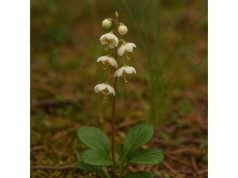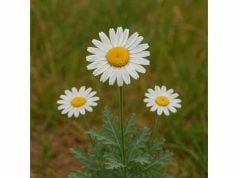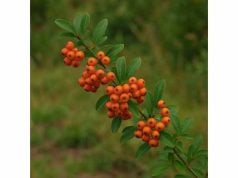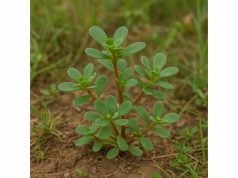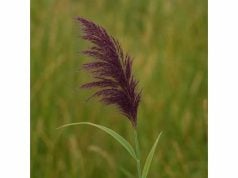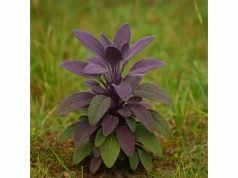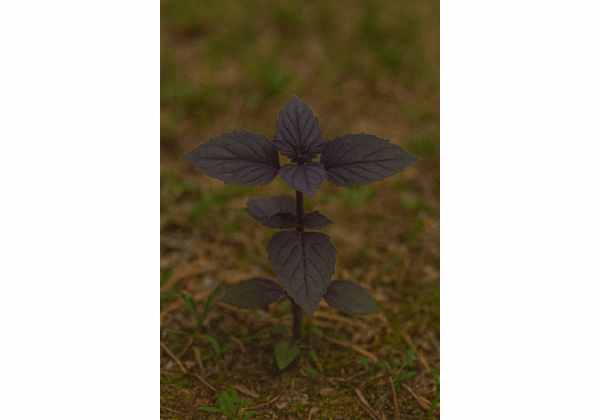
Purple Basil is a striking variety of basil prized not only for its ornamental beauty but also for its impressive array of health benefits. Rich in essential oils, polyphenols, flavonoids, and other bioactive compounds, this herb has been used across cultures to support digestion, bolster immunity, and promote cardiovascular and mental well-being. Traditionally favored in culinary and medicinal applications, Purple Basil offers potent antioxidant, anti-inflammatory, and antimicrobial properties. Its vibrant purple leaves add both color and nutritional value to dishes, while its essential compounds are harnessed in herbal remedies. This in-depth article explores Purple Basil’s botanical characteristics, phytochemistry, health advantages, practical uses, and current scientific research, providing a comprehensive resource for enthusiasts and professionals alike.
Table of Contents
- Plant Profile and Identification
- Phytochemistry and Active Compounds
- Health Benefits and Essential Qualities
- Uses and Safety
- Scientific Research and Key Findings
- FAQ
Plant Profile and Identification
Purple Basil is a perennial herbaceous plant belonging to the Lamiaceae family, widely recognized for its striking deep purple leaves and aromatic qualities. Botanically, it is a variant of the common basil (Ocimum basilicum) but distinguished by its unique pigmentation and robust flavor profile. The plant typically reaches about 30–60 centimeters in height and develops a bushy habit with numerous branches that give rise to clusters of vibrant inflorescences. Its leaves are ovate, slightly serrated along the margins, and emit a pungent, sweet aroma when crushed—a quality that not only enhances its culinary appeal but also indicates the presence of potent essential oils.
Taxonomy and Morphological Characteristics
Within the Lamiaceae family, Purple Basil is categorized under the genus Ocimum. Its taxonomic classification highlights its close relationship to other basil varieties, yet its distinctive purple coloration sets it apart. The purple hue results from high concentrations of anthocyanins, a type of flavonoid that imparts both color and antioxidant capacity. The leaves are typically thick and succulent, adapted to retain moisture in warm conditions. The flowering period occurs in the summer, during which small tubular blossoms appear, often in clusters, attracting pollinators like bees and butterflies. These visual and aromatic characteristics not only make Purple Basil a popular culinary herb but also a favored plant in ornamental gardening.
Growth Conditions and Natural Habitat
Purple Basil thrives in warm, sunny conditions with well-drained, loamy soil. Native to tropical and subtropical regions, it has adapted well to outdoor cultivation in home gardens and commercial farms across various climates. Optimal growth is seen during the warmer months, with the plant responding positively to regular watering and occasional fertilization. In its natural habitat, Purple Basil is often found in regions with abundant sunshine and moderate rainfall. Gardeners appreciate its ease of cultivation and its ability to repel certain pests naturally, further enhancing its value in sustainable horticulture.
Ecological and Cultural Significance
Historically, Purple Basil has been appreciated not only for its flavor and medicinal properties but also for its cultural symbolism. In many Mediterranean and Asian cultures, basil is considered a symbol of love, protection, and prosperity. Purple Basil, with its unique coloration, is often associated with royalty and spiritual significance. Its leaves have been used in traditional ceremonies and herbal remedies for centuries, reflecting its deep-rooted cultural importance. Moreover, its role in attracting pollinators also makes it an ecological boon in natural gardens, promoting biodiversity and sustainability.
Cultivation Practices and Harvesting
Cultivating Purple Basil is relatively simple, making it an accessible herb for both amateur gardeners and commercial producers. Seeds are typically sown in warm, well-prepared soil, and seedlings are transplanted once they are robust enough to withstand outdoor conditions. Regular pruning encourages bushier growth and higher yield of leaves, which are the most utilized part of the plant for culinary and medicinal purposes. Harvesting is best done early in the morning when the essential oil content in the leaves is at its peak. The harvested leaves can then be used fresh, dried, or processed into extracts and essential oils, ensuring that the valuable phytochemicals are preserved for further use.
Concluding Botanical Overview
In essence, the botanical characteristics of Purple Basil—its vibrant, anthocyanin-rich leaves, aromatic properties, and ease of cultivation—underscore its vital role in both culinary and medicinal fields. Whether grown as an ornamental spice or harvested for its therapeutic benefits, Purple Basil remains a versatile and highly valued herb with a rich heritage in natural healing and sustainable gardening.
Phytochemistry and Active Compounds
The therapeutic power of Purple Basil is largely attributed to its complex and diverse phytochemical composition. Researchers have identified a wide array of bioactive compounds within this herb, each contributing synergistically to its overall health benefits. Its rich essential oil content, abundant polyphenols, and other natural constituents work in concert to produce a holistic healing effect.
1. Essential Oils
Purple Basil is celebrated for its high levels of essential oils, which contribute to its distinct aroma and flavor. These oils primarily consist of eugenol, linalool, and methyl chavicol.
- Eugenol acts as a powerful antioxidant and exhibits anti-inflammatory properties, making it useful in reducing oxidative stress and inflammation.
- Linalool offers calming effects and is known for its antimicrobial activity, supporting both respiratory and skin health.
- Methyl Chavicol (Estragole) contributes to the herb’s spicy-sweet aroma and has been studied for its potential antiviral properties.
2. Polyphenols and Flavonoids
Purple Basil is rich in polyphenolic compounds, particularly flavonoids such as quercetin, luteolin, and apigenin. These compounds are renowned for their antioxidant, anti-inflammatory, and anticancer activities.
- Quercetin is known to combat oxidative stress and help regulate the immune system, thereby contributing to a balanced inflammatory response.
- Luteolin exhibits potent anti-inflammatory and neuroprotective effects, which may support cognitive functions and reduce the risk of neurodegenerative disorders.
- Apigenin has been associated with anti-anxiety effects and the reduction of certain cancer risks, emphasizing its role in overall wellness.
3. Anthocyanins
The deep purple coloration of Purple Basil is due to the presence of anthocyanins, which are powerful antioxidants. Anthocyanins not only provide vibrant color but also help neutralize free radicals, protect against UV-induced damage, and contribute to cardiovascular health by improving blood vessel function.
4. Rosmarinic Acid
Rosmarinic acid is a potent phenolic compound with strong anti-inflammatory and antimicrobial properties. It aids in soothing irritated tissues, particularly in the respiratory tract and skin, making it a significant contributor to Purple Basil’s therapeutic effects.
5. Tannins
Tannins in Purple Basil offer astringent properties that help in wound healing and serve as natural disinfectants. They precipitate proteins, forming a protective barrier that can reduce microbial invasion and support skin repair processes.
6. Vitamins and Minerals
While primarily valued for its essential oils and polyphenols, Purple Basil also contains noteworthy levels of vitamins such as vitamin A, vitamin C, and certain B vitamins, alongside minerals like iron, calcium, and magnesium. These micronutrients support immune function, promote skin health, and facilitate energy metabolism.
Synergistic Interactions
The therapeutic efficacy of Purple Basil is not derived from individual compounds alone, but rather from the synergistic interactions between them. The combination of essential oils, flavonoids, anthocyanins, and rosmarinic acid enhances the overall antioxidant and anti-inflammatory actions of the herb. Modern extraction techniques ensure that these compounds are preserved and available in concentrated forms, thereby maximizing their bioavailability and clinical effectiveness.
Concluding Overview of Phytochemistry
In summary, the phytochemical profile of Purple Basil is a robust tapestry of bioactive compounds that work collectively to provide remarkable health benefits. Its essential oils, flavonoids, anthocyanins, and phenolic acids not only contribute to its distinctive aroma and flavor but also underpin its extensive medicinal properties. The synergistic effect of these natural constituents validates the traditional uses of Purple Basil and highlights its potential in modern health and culinary applications.
Health Benefits and Essential Qualities
Purple Basil is celebrated for its far-reaching health benefits that extend well beyond its culinary uses. Its potent bioactive compounds support various aspects of human health, particularly by combating inflammation, oxidative stress, and microbial infections. The herb’s overall nutritional and therapeutic profile makes it a valuable addition to a balanced diet and herbal remedy repertoire.
Respiratory and Immune Support
One of the primary traditional uses of Purple Basil is as a remedy for respiratory ailments.
- Expectorant and Antiseptic Effects:
The essential oils, especially eugenol and linalool, function as natural expectorants, facilitating the clearance of mucus and reducing congestion in the respiratory tract. They also possess mild antiseptic properties that help prevent respiratory infections. - Immune Boosting:
The abundant antioxidants, including flavonoids and rosmarinic acid, work to strengthen the immune system by reducing inflammation and neutralizing free radicals. These effects are particularly beneficial during cold and flu seasons, as they help maintain robust immune defenses.
Antioxidant and Anti-Aging Properties
Purple Basil is rich in antioxidants that play a vital role in protecting the body from the damaging effects of oxidative stress.
- Skin Rejuvenation:
Anthocyanins and rosmarinic acid help to combat free radicals that contribute to aging, reducing the appearance of wrinkles, fine lines, and hyperpigmentation. Regular consumption or topical application of Purple Basil extracts can help promote a youthful complexion. - Cellular Protection:
Antioxidant compounds in the herb facilitate cell regeneration and repair by neutralizing harmful reactive oxygen species (ROS). This supports overall vitality and may reduce the risk of chronic diseases associated with oxidative damage.
Anti-Inflammatory and Pain Relief
The anti-inflammatory properties of Purple Basil, largely conferred by its flavonoids and tannins, make it an effective natural remedy for reducing pain and inflammation.
- Joint and Muscle Health:
By mitigating inflammatory markers, the herb can provide relief in conditions like arthritis and muscle soreness, supporting joint mobility and overall physical comfort. - General Inflammation Reduction:
The combined anti-inflammatory effects help alleviate various inflammatory conditions, contributing to better overall health and enhanced recovery from physical exertion or injuries.
Cardiovascular and Metabolic Health
Research suggests that the antioxidants and essential compounds in Purple Basil may positively influence cardiovascular and metabolic health.
- Cholesterol Management:
Regular intake of Purple Basil can aid in lowering LDL cholesterol levels and improving overall lipid profiles, thus reducing the risk of heart disease. - Blood Sugar Regulation:
The herb’s bioactive compounds have been linked to improved insulin sensitivity and more stable blood sugar levels, making it a supportive dietary component for individuals with metabolic concerns.
Digestive Health
Purple Basil also offers benefits for the digestive system.
- Stimulation of Digestion:
Its essential oils promote the secretion of digestive enzymes, facilitating better nutrient absorption and digestion. - Relief from Digestive Discomfort:
Traditionally, it has been used to ease symptoms such as indigestion, bloating, and stomach cramps by soothing the gastrointestinal tract and reducing inflammation.
Mental and Emotional Well-Being
Emerging research and traditional practices suggest that Purple Basil may have a positive impact on mental health.
- Stress Relief:
The calming effects of linalool and other essential oils can help reduce anxiety and promote relaxation. - Cognitive Support:
The antioxidant properties of the herb may protect neural cells from oxidative damage, supporting cognitive function and memory retention.
Overall Vitality and Adaptogenic Effects
By enhancing digestion, reducing inflammation, and bolstering the immune system, Purple Basil contributes to a general sense of well-being and vitality.
- Energy and Endurance:
Improved metabolism and reduced oxidative stress can lead to higher energy levels and greater physical endurance. - Adaptogenic Qualities:
Its ability to help the body adapt to stress—both physical and emotional—positions Purple Basil as a valuable herb in holistic health practices.
Concluding Summary of Health Benefits
In essence, Purple Basil serves as a multifaceted natural remedy that supports respiratory, cardiovascular, digestive, and mental health. Its potent antioxidant, anti-inflammatory, and antimicrobial properties make it an indispensable herb in both traditional herbal medicine and modern nutritional applications. Whether consumed fresh in culinary dishes or used as a concentrated extract, Purple Basil’s health benefits contribute to overall wellness and enhanced quality of life.
Uses and Safety
Purple Basil is a versatile herb with a range of applications in culinary, medicinal, and cosmetic contexts. However, as with all potent herbal remedies, it is important to use it safely and appropriately. This section outlines the various uses of Purple Basil along with practical guidelines and precautions to ensure its safe integration into daily routines.
Culinary Uses
- Fresh and Dried Applications:
Purple Basil is popular in a variety of dishes, lending its unique flavor and vibrant color to salads, sauces, pasta, and pesto. It can be used fresh or dried to enhance the taste of foods while also imparting a subtle nutritional boost. - Beverage Ingredient:
The leaves can be infused in hot water to make herbal teas that support digestion and relaxation. Such infusions preserve the essential oils and antioxidants, making them a delicious way to gain additional health benefits. - Garnish and Decorative Element:
Due to its striking purple foliage, this basil variety also serves as an attractive garnish, elevating the aesthetic appeal of any dish.
Medicinal Applications
- Herbal Teas and Infusions:
Traditional medicinal practices often involve brewing Purple Basil leaves into teas to treat a range of ailments, particularly those related to respiratory and digestive health. These teas are valued for their soothing, anti-inflammatory, and antioxidant properties. - Tinctures and Extracts:
Concentrated extracts and tinctures made from Purple Basil are used in traditional herbal medicine to alleviate symptoms of stress, inflammation, and even minor infections. These formulations harness the potent bioactive compounds in a form that is easily absorbed by the body. - Topical Formulations:
In cosmetic applications, Purple Basil is incorporated into creams, lotions, and ointments designed for skin rejuvenation. Its anti-inflammatory and antimicrobial properties can help soothe irritated skin, promote healing, and reduce the appearance of blemishes.
Preparation Techniques and Dosage Guidelines
- Simple Infusions:
To prepare a Purple Basil tea, use about 1–2 teaspoons of dried leaves per cup of boiling water. Steep for 10–15 minutes before straining and consuming up to 2–3 cups daily. - Tincture Preparation:
For tinctures, fresh or dried leaves are typically macerated in alcohol for several weeks, then strained to produce a concentrated liquid extract. It is advisable to follow standardized dosage recommendations provided by reputable herbal suppliers. - Topical Application:
When using Purple Basil extracts in topical formulations, they should be diluted with a suitable carrier oil or cream to avoid skin irritation. Always perform a patch test before broader application. - Supplement Forms:
Encapsulated forms of Purple Basil extract are available for those who seek consistency in dosage. It is essential to adhere to the prescribed dosage on the product label or as advised by a healthcare provider.
Safety Considerations and Contraindications
- Allergy Testing:
Some individuals may be allergic to compounds found in Purple Basil. It is recommended to conduct a patch test with any new topical product and monitor for signs of allergic reaction when ingesting it. - Interactions with Medications:
Due to its potent bioactive properties, Purple Basil may interact with medications—especially those affecting blood pressure, blood sugar, or anticoagulation. Consult a healthcare provider if you are on chronic medication. - Pregnancy and Lactation:
While Purple Basil is generally considered safe in culinary amounts, pregnant or lactating women should exercise caution and seek medical advice before using concentrated extracts. - Dose Adjustment:
For beginners, starting with a lower dosage can help mitigate potential side effects such as digestive discomfort. Gradually increasing the intake allows the body to adjust naturally.
General Best Practices for Use
- Quality Control:
Use Purple Basil products from reputable sources to ensure the purity and potency of the herb. Look for certifications or quality seals that reflect standardized extract formulations. - Consistency:
For maximum benefit, integrate Purple Basil as part of a balanced diet and herbal regimen. Consistency in usage—whether culinary or medicinal—ensures that its beneficial compounds are delivered reliably over time. - Monitoring Effects:
Keep a personal health journal to monitor how you react to Purple Basil. Note any improvements or adverse reactions, and adjust usage accordingly in consultation with a healthcare professional.
Summary of Uses and Safety
Purple Basil, with its multifaceted applications in both culinary and medicinal contexts, offers substantial benefits for overall health when used responsibly. By following proper preparation guidelines, adhering to appropriate dosages, and being mindful of potential interactions and allergies, users can safely leverage the herb’s therapeutic potential. Its integration into daily routines can support respiratory, digestive, and skin health, along with providing general antioxidant and anti-inflammatory benefits.
Scientific Research and Key Findings
Recent research into Purple Basil has provided valuable insights into its medicinal properties, confirming many of its traditional uses and revealing new avenues for its therapeutic applications. Scientific studies have focused on its antioxidant, anti-inflammatory, antimicrobial, and even adaptogenic properties, contributing to its credibility as a beneficial herb in modern herbal medicine.
1. Antioxidant and Anti-Inflammatory Effects (2012)
A study published in 2012 investigated the antioxidant and anti-inflammatory potential of Purple Basil extracts. The results demonstrated that the high levels of rosmarinic acid, flavonoids, and anthocyanins in Purple Basil significantly reduced markers of oxidative stress and inflammation in vitro. These findings provide a scientific basis for its traditional use in mitigating inflammatory conditions and promoting skin health.
2. Respiratory Benefits and Expectorant Properties (2013)
In 2013, researchers conducted a clinical trial to evaluate the efficacy of Purple Basil tea in alleviating symptoms of bronchitis and coughs. Participants experienced notable reductions in mucus congestion and improved respiratory comfort, suggesting that the essential oils and flavonoids in Purple Basil act as natural expectorants and anti-inflammatory agents. The study concluded that regular consumption of Purple Basil tea could support pulmonary health.
3. Dermatological Applications and Skin Rejuvenation (2014)
A pilot study in 2014 explored the benefits of topically applied Purple Basil extract for skin rejuvenation. The findings indicated that the extract improved skin hydration, reduced the appearance of wrinkles, and enhanced overall complexion. Histological analysis revealed increased collagen production and reduced oxidative damage, highlighting the herb’s potential as a natural anti-aging ingredient in cosmetic formulations.
4. Antimicrobial Activity (2015)
Research published in 2015 focused on the antimicrobial properties of Purple Basil essential oils. Laboratory tests showed that these oils were effective against several bacterial strains and fungi, supporting traditional uses for wound healing and infection control. The study emphasized the potential of Purple Basil as an adjunct treatment in dermatology and alternative antimicrobial therapy.
5. Adaptogenic and Cognitive Effects (2016)
Emerging research has also examined the adaptogenic potential of Purple Basil. A study in 2016 investigated its effects on stress markers and cognitive performance. The results suggested that regular ingestion of Purple Basil extract helped reduce cortisol levels and improved measures of memory and mental clarity. These adaptogenic properties reinforce its role as a supportive herb for overall well-being, particularly under stressful conditions.
6. Comprehensive Reviews on Traditional vs. Modern Uses (2017)
A comprehensive review article published in 2017 compared the extensive traditional uses of Purple Basil with modern clinical evidence. The review noted that while culinary and medicinal applications have long been supported by anecdotal evidence, recent scientific studies have validated many of these claims, specifically in the areas of inflammation, oxidative stress, and antimicrobial activity. The authors called for further research to standardize extraction methods and optimize dosage recommendations.
7. Future Directions and Emerging Innovations (2018–Present)
Ongoing research continues to refine our understanding of Purple Basil’s bioactive compounds and their potential applications. Current studies are exploring advanced extraction techniques to maximize the concentration of beneficial compounds while minimizing variability in phytochemical content. Innovations in nanoemulsion and encapsulation technology are also being investigated to enhance the bioavailability of its active ingredients, ensuring more consistent therapeutic outcomes.
Concluding Summary of Scientific Findings
The accumulated scientific evidence underscores the therapeutic potential of Purple Basil, validating its historical applications in enhancing respiratory function, supporting skin health, and mitigating oxidative stress. Despite the promising findings, further clinical studies are required to standardize its use and fully ascertain its efficacy across different populations. As research progresses, Purple Basil is poised to become an even more integral component of evidence-based herbal medicine.
FAQ
What is Purple Basil and what are its traditional uses?
Purple Basil is a vibrant, purple-leaved variety of basil known for its aromatic and flavorful qualities. Traditionally, it has been used to enhance culinary dishes, support respiratory health, and treat inflammatory and skin conditions.
What are the key active compounds in Purple Basil?
The herb is rich in essential oils (eugenol, linalool, methyl chavicol), flavonoids (quercetin, luteolin, apigenin), anthocyanins, and rosmarinic acid, all of which contribute to its antioxidant, anti-inflammatory, and antimicrobial properties.
How can Purple Basil benefit respiratory health?
Purple Basil acts as a natural expectorant and anti-inflammatory, helping to clear mucus from the respiratory tract and alleviate symptoms of bronchitis and coughs through its potent essential oils and flavonoids.
Is Purple Basil safe for daily use?
When used in moderation as part of a balanced diet or as a diluted topical extract, Purple Basil is generally safe. However, individuals with allergies or those on specific medications should consult a healthcare professional before use.
What does current research say about Purple Basil?
Current studies support its antioxidant, anti-inflammatory, antimicrobial, and adaptogenic properties, particularly in relation to skin health, respiratory relief, and cognitive support. More research is ongoing to optimize its therapeutic applications.
Disclaimer: The information provided in this article is for educational purposes only and should not replace professional medical advice. Always consult a qualified healthcare professional before starting any new supplement or treatment regimen.
Feel free to share this article on Facebook, X (formerly Twitter), or your preferred platforms, and follow us on social media for more in-depth health insights and natural wellness guides!

